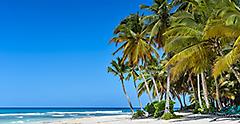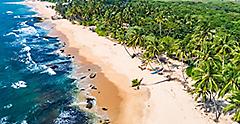Visiting from {destination_country}? {destination_flag}
Go to Site
10 OF THE BEST THINGS TO DO ON THE NEW STAR OF THE SEAS
Get ready for the world's best family vacation aboard the new Star of the Seas, now sailing from Port Canaveral.
Read articleYOUR ULTIMATE
CRUISE GUIDE
This is Royal Caribbean’s ultimate guide to helping you take your cruising experience to the next level. Don’t just take a vacation — take an immersive cultural journey, a palate-pleasing culinary expedition, or a full-blown epic family vacation that everyone will enjoy. All you need to know and more, is just one click away.
FEATURED ARTICLE

Latest articles

Star of the Seas Insider: The World’s Best Family Vacation

How To Pick The Best Stateroom on Star of the Seas

6 Tips For Cruise Room Upgrades

Your Best Family Vacation On Icon Of The Seas

The Best Family Beaches in Florida

trending stories
BEST PLACES TO TRAVEL
If you’re looking for inspiration or even if you already know exactly where you want to go, our helpful guides give you the latest scoop on top travel destinations and the best places to vacation. Check them out.
best FAMILY vacation
Want to plan a family getaway but don’t know where to start? Read on for the best family vacation spots and top destinations for family vacations. You’ll find everything you need to create the epic family vacay you’ve been waiting for.
FIND A CRUISE NEAR YOU
Adventure is closer than ever! Browse through our helpful guides to find the perfect cruise sailing from your backyard. From weekend getaways to weeklong explorations, there are countless thrilling options for cruises near you.
TOP THINGS TO DO
There’s no time for tame on vacation. Take a peek at our travel tips for ideas on the top things to do onboard our award-winning ships. Plus, learn about all the must-dos at top travel destinations.
FOR THE FOODIES
From mouthwatering dishes you can’t miss in Bermuda to the most decadent desserts around the world, you’ll find the ultimate foodies guide for food lovers right here! Take a look and get ready to be hungry.
BEST OF LISTS
Discover where to find the 10 most beautiful beaches in the Caribbean or the top European cities you can cruise to this summer. We’ve made a list of the best vacation spots to visit. Read on and start planning!
PLAN YOUR CRUISE
Need help planning a vacation? We’ve got you covered. Check out our guides for everything you need to know to make the most of your getaway, like how to plan a cruise, what to pack and more.
GET TO KNOW YOUR SHIP
Learn cool tips about our ships — and read our cruise ship reviews and guides to learn the best things to do onboard, what’s included, and why we’re voted the best cruise line, year after year. We have all the details for you in one convenient place!
explore our private islands
Check out our guides to learn more about private island vacations at Perfect Day at CocoCay and our private destination Labadee — including things to do, best dishes to try and how to get there.
EXPLORE MORE
Previewing: Promo Dashboard Campaigns Loading date...




































































































































































































































































































































































































































































































































































































